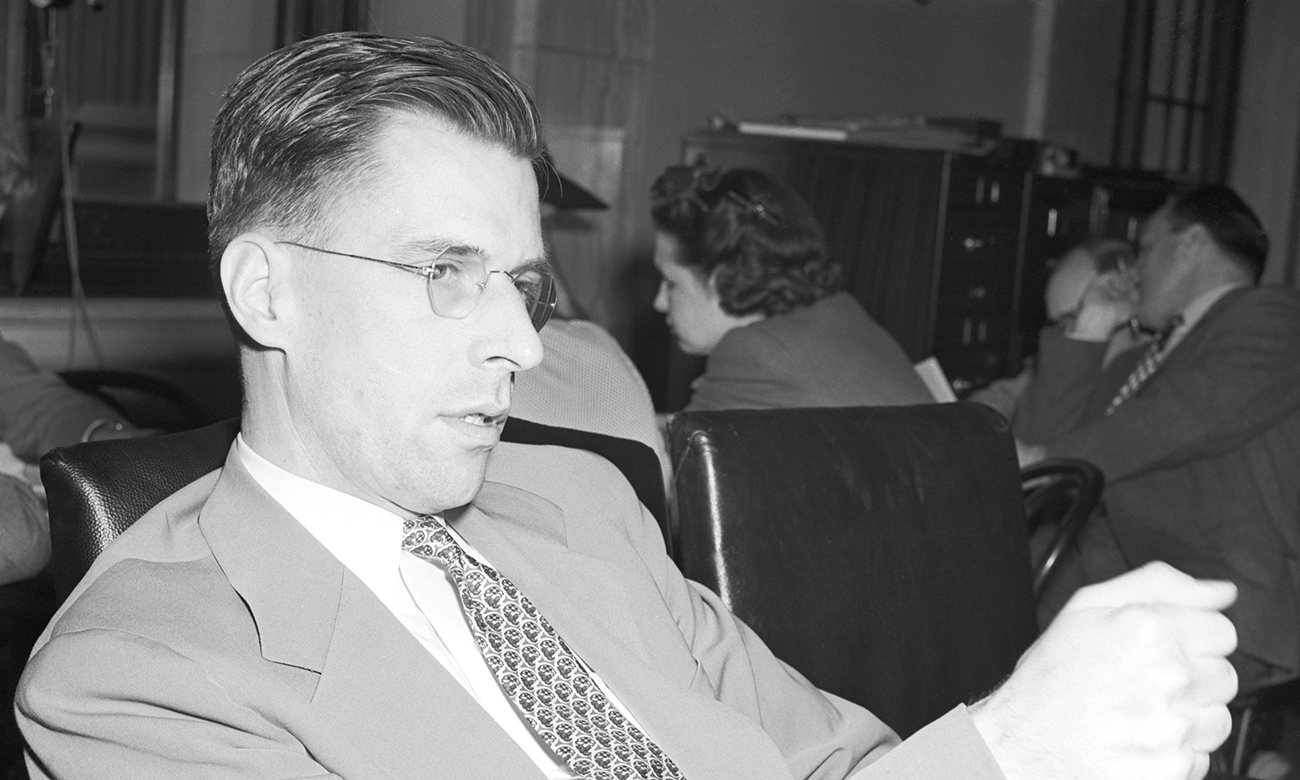
伟大的美国思想家马克·吐温应该说过“历史不会重复,但会经常押韵”。
随着通货膨胀于今年6月再创40年新高,另外一位伟大的美国思想家、传奇经济学家约翰·肯尼斯·加尔布雷思81年前的一篇经济论文,能否为今天的经济迷局指明方向?
1941年5月,加尔布雷思发表了论文《通胀控制措施的选择与时机》(The Selection and Timing of Inflation Controls)。当时,这位经济学家辞去了在哈佛大学(Harvard University)和普林斯顿大学(Princeton University)的职务,开始担任美国物价管理局(Office of Price Administration)的副局长,负责在美国为二战备战时控制通货膨胀。
JK·加尔布雷思的儿子、经济学家詹姆斯·K·加尔布雷思告诉《财富》杂志:“我父亲在珍珠港事件到1943年5月期间负责控制通货膨胀。”他补充说,1941年“是第二次世界大战的关键一年,在这一年确定了紧急状况下控制通货膨胀的模式。”
JK·加尔布雷思在论文中回顾了几十年前高企的物价、区分一次性供应瓶颈与广泛通胀所面临的挑战,以及需求长期下滑之后的突然激增等现象。听起来很熟悉吗?
时间回到2022年,20世纪70年代的高通胀可以与加尔布雷思回顾的20世纪10年代的恶性通胀相比较,2021年的供应链危机与20世纪40年代的供应链阻塞类似,而伴随新冠疫苗出现的需求激增则与战时经济中的生活需求激增类似。
密苏里大学堪萨斯城分校(University of Missouri-Kansas City)的经济学专业博士生萨姆·利维对这种相似性感到震惊。他在一系列推文中发布了他所说的加尔布雷思81年前写的“必读”文章,在社交媒体上很快获得数百条点赞和转发。
利维对《财富》杂志表示,他在研究战时经济发展模式时,偶然读到了加尔布雷思这篇具有先见之明的文章。“我在读这篇文章的时候,每种情况都有一种似曾相识的感觉。”
战时经济?
詹姆斯·加尔布雷思现任得克萨斯大学奥斯汀分校(University of Texas at Austin)的政府学教授。他表示,今天有关通货膨胀的讨论中缺失了一些信息。
他告诉《财富》杂志:“讨论局限于一种教科书模式,而教科书是学者和理想主义者发明的。他们并没有立足于我们目前所面临的现实。”2022年,加尔布雷思指出,我们正在面临能源行业的严重破坏,而能源是其他所有行业的基础。
南加州大学(University of Southern California)的金融与商务经济学教授劳伦斯·哈里斯称,1941年与今天的一个重要区别在于,美国并没有在积极备战。
哈里斯对《财富》杂志表示:“加尔布雷思在文章中讨论的是1941年的美国应该怎么办。他剖析了自己对通胀原因的看法以及如何应对通胀。让我感到非常意外的是,有人会认为这是讨论通货膨胀的一篇开创性文章。它并不是在对通胀原因和应对方法进行分类。”
相反,他认为,这篇文章所讨论的是在战时生产期间如何调动资源,并避免导致通货膨胀。
虽然经济学很有趣,但哈里斯表示,这篇文章与今天的相关性并不明显。他也认为:“疫情经济与战时经济在性质上类似,”但“量化比较基本上毫无意义。”
有多位经济学家曾经将疫情经济与战时经济相提并论。
詹姆斯·加尔布雷思称:“我确实会这样对比。”但他承认,由于其他一些原因,这两种经济并不具有可比性。
他指出:“20世纪40年代,美国是一个高度自给自足并且占据巨大优势的工业和科技强国。虽然有一些外部问题,但并不像目前一样普遍。”
詹姆斯·加尔布雷思依旧表示,“通货膨胀”是一个被过度使用的术语,它通常是指因为货币普遍贬值所导致的物价普遍上涨。
他说:“我对‘通货膨胀’这个词的使用存在质疑,每当一般物价水平上涨时,人们普遍都会提到这个词。现在我们所面临的状况是,有些行业可以充分利用现在的供应成本现状,尤其是能源行业。”
7月13日的CPI报告显示美国通胀水平达到40年新高。其中最大的影响因素是能源价格。今年6月,能源价格同比涨幅达到惊人的41.6%,主要原因是俄乌冲突对能源市场的破坏。虽然美国当时或许还不是战时经济,但2022年,美国经济似乎一定会进入“战时状态”。(财富中文网)
翻译:刘进龙
审校:汪皓
伟大的美国思想家马克·吐温应该说过“历史不会重复,但会经常押韵”。
随着通货膨胀于今年6月再创40年新高,另外一位伟大的美国思想家、传奇经济学家约翰·肯尼斯·加尔布雷思81年前的一篇经济论文,能否为今天的经济迷局指明方向?
1941年5月,加尔布雷思发表了论文《通胀控制措施的选择与时机》(The Selection and Timing of Inflation Controls)。当时,这位经济学家辞去了在哈佛大学(Harvard University)和普林斯顿大学(Princeton University)的职务,开始担任美国物价管理局(Office of Price Administration)的副局长,负责在美国为二战备战时控制通货膨胀。
JK·加尔布雷思的儿子、经济学家詹姆斯·K·加尔布雷思告诉《财富》杂志:“我父亲在珍珠港事件到1943年5月期间负责控制通货膨胀。”他补充说,1941年“是第二次世界大战的关键一年,在这一年确定了紧急状况下控制通货膨胀的模式。”
JK·加尔布雷思在论文中回顾了几十年前高企的物价、区分一次性供应瓶颈与广泛通胀所面临的挑战,以及需求长期下滑之后的突然激增等现象。听起来很熟悉吗?
时间回到2022年,20世纪70年代的高通胀可以与加尔布雷思回顾的20世纪10年代的恶性通胀相比较,2021年的供应链危机与20世纪40年代的供应链阻塞类似,而伴随新冠疫苗出现的需求激增则与战时经济中的生活需求激增类似。
密苏里大学堪萨斯城分校(University of Missouri-Kansas City)的经济学专业博士生萨姆·利维对这种相似性感到震惊。他在一系列推文中发布了他所说的加尔布雷思81年前写的“必读”文章,在社交媒体上很快获得数百条点赞和转发。
利维对《财富》杂志表示,他在研究战时经济发展模式时,偶然读到了加尔布雷思这篇具有先见之明的文章。“我在读这篇文章的时候,每种情况都有一种似曾相识的感觉。”
战时经济?
詹姆斯·加尔布雷思现任得克萨斯大学奥斯汀分校(University of Texas at Austin)的政府学教授。他表示,今天有关通货膨胀的讨论中缺失了一些信息。
他告诉《财富》杂志:“讨论局限于一种教科书模式,而教科书是学者和理想主义者发明的。他们并没有立足于我们目前所面临的现实。”2022年,加尔布雷思指出,我们正在面临能源行业的严重破坏,而能源是其他所有行业的基础。
南加州大学(University of Southern California)的金融与商务经济学教授劳伦斯·哈里斯称,1941年与今天的一个重要区别在于,美国并没有在积极备战。
哈里斯对《财富》杂志表示:“加尔布雷思在文章中讨论的是1941年的美国应该怎么办。他剖析了自己对通胀原因的看法以及如何应对通胀。让我感到非常意外的是,有人会认为这是讨论通货膨胀的一篇开创性文章。它并不是在对通胀原因和应对方法进行分类。”
相反,他认为,这篇文章所讨论的是在战时生产期间如何调动资源,并避免导致通货膨胀。
虽然经济学很有趣,但哈里斯表示,这篇文章与今天的相关性并不明显。他也认为:“疫情经济与战时经济在性质上类似,”但“量化比较基本上毫无意义。”
有多位经济学家曾经将疫情经济与战时经济相提并论。
詹姆斯·加尔布雷思称:“我确实会这样对比。”但他承认,由于其他一些原因,这两种经济并不具有可比性。
他指出:“20世纪40年代,美国是一个高度自给自足并且占据巨大优势的工业和科技强国。虽然有一些外部问题,但并不像目前一样普遍。”
詹姆斯·加尔布雷思依旧表示,“通货膨胀”是一个被过度使用的术语,它通常是指因为货币普遍贬值所导致的物价普遍上涨。
他说:“我对‘通货膨胀’这个词的使用存在质疑,每当一般物价水平上涨时,人们普遍都会提到这个词。现在我们所面临的状况是,有些行业可以充分利用现在的供应成本现状,尤其是能源行业。”
7月13日的CPI报告显示美国通胀水平达到40年新高。其中最大的影响因素是能源价格。今年6月,能源价格同比涨幅达到惊人的41.6%,主要原因是俄乌冲突对能源市场的破坏。虽然美国当时或许还不是战时经济,但2022年,美国经济似乎一定会进入“战时状态”。(财富中文网)
翻译:刘进龙
审校:汪皓
A great American thinker, Mark Twain, is supposed to have said that history doesn’t repeat itself, but it rhymes.
With inflation hitting yet another new 40-year high in June, could an economic paper from 81 years ago, by another great American thinker, the legendary economist John Kenneth Galbraith, reveal any answers to today’s confusing economy?
In May 1941, when Galbraith published “The Selection and Timing of Inflation Controls,” the economist was coming off stints at Harvard and Princeton, and was beginning to serve as deputy director of the Office of Price Administration, managing inflation as the U.S. geared up for World War II.
“My father was responsible for the control of inflation from the time of Pearl Harbor to May of 1943,” the economist James K. Galbraith, son of J.K. Galbraith, told Fortune, adding that 1941 was “a crucial year in the second world war, where the pattern for inflation control under emergency conditions was set.”
Looking backward, J.K. Galbraith wrote about the memory of skyhigh prices decades earlier, the challenge of distinguishing between one-off bottlenecks and wider inflation, and demand suddenly roaring back to life after a long slump. Sound familiar?
Flash forward to 2022, and you can sub in the high inflation of the 1970s for the hyperinflation of the 1910s that Galbraith looked back on, the supply-chain crisis of 2021 for the bottlenecks of the 1940s, and the sudden surge that accompanied COVID vaccines for the roaring to life of the wartime economy.
Sam Levey, an economics doctoral student at the University of Missouri-Kansas City, was struck by the similarities, and his Twitter thread on what he called Galbraith’s “must-read” 81-year-old piece quickly racked up hundreds of likes and retweets on econTwitter.
Levey told Fortune that he stumbled across the prescient Galbraith article during his research on how economies evolve during wartime. “I was reading it and it was deja vu, one thing after another.”
A wartime economy?
James Galbraith, who is currently a professor of government at the University of Texas at Austin, says there’s something missing from our conversations about inflation today.
“The conversation has been stuck in a kind of textbook mode, and the textbooks are invented by academics and ideologists,” he told Fortune. “They’re not rooted in the realities that we’re presently dealing with.” In 2022, Galbraith said, we are dealing with a huge disruption of the energy sector and energy underpins just about everything else.
One major difference between 1941 and today, says Lawrence Harris, a professor of finance and business economics at the University of Southern California, is that the United States is not gearing up for war.
“Galbraith’s article is all about what to do in 1941,” Harris told Fortune. “He lays out his thoughts about the causes of inflation and how to deal with it. I found it very surprising that someone would identify this as a seminal piece on inflation. It’s not a taxonomy of what causes inflation and how to deal with it.”
Rather, he says, it was about moving resources around during war-time production without causing inflation.
Although the economics are interesting, Harris says the relevance of the piece today isn’t so obvious to him. Still, he allows, “the pandemic economy is qualitatively similar to wartime economy,” although “the quantitative comparison is largely meaningless.”
Several economists have likened the pandemic economy to a wartime economy.
“I was certainly one of those that drew that parallel,” James Galbraith says, while acknowledging the economies aren’t comparable for other reasons.
“In the 1940s, the U.S. was a very self-contained, massively dominant industrial and technical power,” James Galbraith says. “There were some external issues but they weren’t nearly as pervasive as they are now.”
Still, James Galbraith says “inflation” is a loaded term, one that generally refers to generalized increase in prices that is driven by a generalized decline in the value of the currency.
“I would raise a question about the very use of this word ‘inflation,’ which generally just is used every time there is an increase in the general price level,” he said. “What we’re looking at here is particular sectors are in a position to take real advantage of supplying cost conditions, the main one is energy.”
As for July 13’s CPI report, which showed the highest inflation in 40 years? The single largest contributor was energy prices, which surged a whopping 41.6% year-over-year in June, the main culprit being the disruption to energy markets from the war in Ukraine. The U.S. may not have a wartime economy, then, but 2022 definitely seems to.






